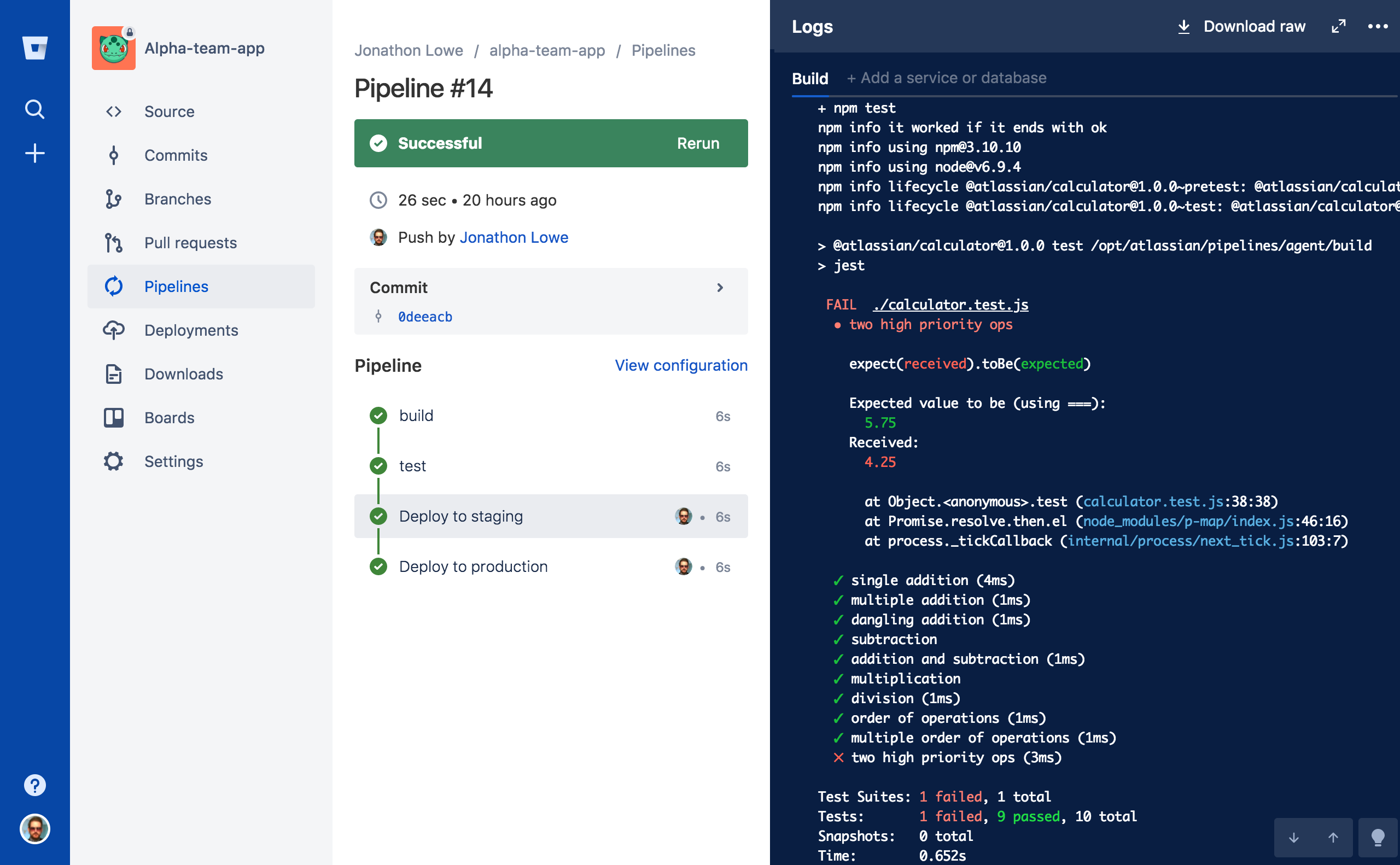9 best configuration management tools for your DevOps team
Configuration management tools are software solutions that enhance system stability and agility. They automate the management and tracking of IT infrastructure. DevOps teams use these tools to help provision, configure, and deploy software and hardware resources across diverse environments.
This guide will review the benefits of the best software configuration management tools and how they can help DevOps teams streamline workflows and maintain version control while aiding collaboration and problem management.
What are configuration management tools?
Software configuration management tools ensure uniformity and reliability throughout the development and deployment processes.
You can use configuration management tools to implement the following in your DevOps pipeline:
- Version control: Track and manage evolving software configurations.
- Automation: Cut down on repetitive tasks for setting up, deploying, and managing software configurations.
- Collaboration: Give stakeholders a centralized platform to collaborate, share configurations, track changes, and resolve conflicts.
- Consistency: Enforce consistent configurations across multiple environments so applications behave predictably in different settings.
related material
Tame software sprawl
SEE SOLUTION
Manage your components with Compass
Benefits of configuration management tools
To start DevOps on the right foot, you need the right DevOps tools. Configuration management tools empower teams to manage configurations for consistency, reliability, and stability throughout the software development and deployment lifecycle.
These tools provide robust version control, foster collaboration, and streamline workflows.
These features benefit teams starting DevOps because they:
- Ensure a clear audit trail of changes to the environment and enable swift rollbacks if issues arise with version control.
- Improve communication and constructive collaboration among team members for more efficient development cycles.
- Accelerate software delivery with streamlined workflows.
9 best configuration management tools:
To discover your company's best configuration management tools, evaluate your requirements, infrastructure, team skill sets, scalability needs, and your environment’s complexity. Consider each tool’s features, ease of use, scalability, community support, and compatibility with your existing infrastructure.
Discover nine of the most widely recognized and favored configuration management tools and what they are best for.
Best for CI/CD: Bitbucket
Using Git’s distributed version control capabilities, Bitbucket provides a seamless environment for collaborative development through pull requests. Teams can review code changes, suggest modifications, and support a structured process for integrating updates into the main codebase.
Bitbucket’s integration with continuous integration and continuous deployment (CI/CD) pipelines streamlines the software delivery process. Teams can automate application building, testing, and deployment to ensure consistent quality and reliability throughout the development lifecycle.
Best version control system: Git
Teams that learn Git can incorporate configuration management data alongside code and place it in a repository to gain a holistic view of an entire project’s evolution.
Teams receive a unified history of changes that helps simplify managing configurations alongside code updates. This approach streamlines collaboration, facilitates rollback capabilities, and ensures consistency across environments.
Learn Git with Bitbucket Cloud.
To learn Git, use Bitbucket Cloud. You’ll leverage crucial functionalities like creating repositories, branching, merging, and pull requests — while also getting the opportunity to understand version control strategies and how to use pipelines for continuous integration and deployment practices within a collaborative environment.
Best for application deployment: Ansible
Ansible excels in various application deployment and configuration management scenarios because of its versatility and simplicity. Ansible helps you to:
- Streamline the deployment process by automating the setup and configuration of applications across diverse environments. It also efficiently manages deploying web servers, databases, and middleware.
- Ease configuration management by maintaining consistent configurations across a fleet of servers or infrastructure components. Ansible ensures the completion of tasks such as software installation configuration updates and uniformly enforces security policies across multiple machines.
Best for infrastructure automation: Chef
Chef utilizes IaC, enabling the creation, provisioning, and maintenance of infrastructure components through easily readable and manageable code. Chef can:
- Optimize infrastructure management automation. It provides a holistic approach, enabling users to efficiently automate provisioning, configuration, and management tasks.
- Ensure infrastructure consistency. Chef empowers teams to implement changes, enforce policies, and manage configurations consistently across different environments, reducing manual efforts.
- Integrate with Atlassian. Chef proves its effectiveness in managing complex infrastructures, enhancing agility, and enabling efficient team collaboration.
Best for large-scale configurations: Puppet
Puppet is a potent configuration management tool renowned for its robust capabilities in managing and maintaining complex infrastructures. Puppet helps teams:
- Offer scalability and centralized control using a master-agent architecture. This enables administrators to manage thousands of nodes from a central Puppet server efficiently.
- Handle many nodes while maintaining consistency and efficiency across expansive IT environments.
Best for automating workflows: Bitbucket Pipelines

Bitbucket Pipelines is an integrated CI/CD solution that automates workflows and accelerates software delivery directly within the Bitbucket repository environment. Bitbucket Pipelines can:
- Help catch issues early in the development cycle by allowing developers to define automated processes triggered by code changes. This includes running tests, compiling code, or performing static code analysis.
- Enable the automated deployment of applications to various environments. With customizable deployment, teams can seamlessly push changes to stage or production environments once tests pass. This ensures faster and more reliable delivery.
Best for high-speed and scalability: SaltStack
SaltStack is a potent configuration management and automation tool recognized for its exceptional speed, scalability, and versatility. This speed makes SaltStack exceptionally efficient in managing large-scale infrastructures. SaltStack helps teams:
- Create custom configurations known as states using YAML or Jinja. These define the desired system state, facilitating configuration management, software installation, and system updates across various platforms.
- Respond quickly to changes or issues with SaltStack’s event-driven architecture. This enables real-time reactions to events triggered across the infrastructure.
- Orchestrate complex workflows and execute commands across distributed systems at high speed—ideal for managing large clusters or cloud environments.
Best for problem management: Jira Service Management
Jira Service Management accelerates workflow among development, IT, and business teams. Built on Jira, teams can streamline incident and problem management with Jira Service Management processes, including:
- Logging, tracking, and resolving incidents quickly with customizable workflows. Users can create and prioritize incidents, collaborate on solutions, and communicate updates. Jira Service Management streamlines the incident resolution process, ensures faster response times, and minimizes downtime.
- Identifying root causes of recurring incidents through problem management functionalities. Teams can link related incidents, analyze root causes, and implement long-term solutions.
- Facilitating team collaboration with real-time updates, status tracking, and centralized communication channels. This ensures everyone stays informed and aligned, improving teamwork and efficiency.
- Gaining a unified platform for issue tracking, collaboration, and knowledge sharing by integrating Jira Service Management with Atlassian tools such as Jira Software and Confluence. Its customizable workflows and automation rules adapt to specific company needs.
Best for container orchestration: Kubernetes
Kubernetes is an open-source container orchestration platform that revolutionizes application deployment, scaling, and management. Kubernetes efficiently schedules and deploys containers across a cluster of machines. This optimizes resource utilization and ensures high availability by managing workload placement. Kubernetes can:
- Scale the number of containers automatically based on demand or defined metrics. Kubernetes ensures applications can handle varying workloads without manual intervention.
- Provide built-in service discovery and load-balancing mechanisms by efficiently distributing network traffic to containers. This ensures consistent application availability and reliability.
- Monitor the health of your containers and automatically restart or replace failed instances. This self-healing feature maintains application uptime, enhancing reliability.
Discover more about Kubernetes and how it supports numerous container runtimes.
How to integrate Bitbucket with other software development tools
Bitbucket integrates seamlessly with Jira, like Jira Software and Jira Service Management, for streamlined issue tracking and development collaboration. Developers can reference and link Bitbucket branches, commits, and pull requests directly within Jira for better traceability between code changes and tasks.
Bitbucket integrates with Confluence as well. This allows teams to embed Bitbucket repositories, pull requests, and code snippets directly into Confluence pages. This integration fosters knowledge sharing, enhances collaboration, and ensures that project documentation remains current.
Bitbucket also merges with its built-in CI/CD tool, Bitbucket Pipelines. This integration automates build, test, and deployment processes directly from Bitbucket repositories. Developers can define and execute pipelines within Bitbucket, promoting a smoother transition from code changes to deployment while maintaining configurations within the same platform.
These integrations within the Atlassian ecosystem empower teams to work more cohesively, ensuring a seamless flow between project management, documentation, code development, and deployment processes. They streamline workflows, improve transparency, and enhance collaboration across the entire software development lifecycle.
Achieve effective configuration management with Bitbucket
Bitbucket offers a comprehensive platform for configuration management. It allows teams to maintain, track, and control configurations alongside code within repositories. Bitbucket helps teams:
- Facilitate collaborative workflows: Teams can create branches, make changes, and submit pull requests specific to configurations.
- Maintain consistent configurations across different environments: With version control, teams can easily replicate configurations across development, testing, staging, and production environments to reduce discrepancies and ensure uniformity.
- Achieve better reproducibility, easier troubleshooting, and enhanced software stability: This improves the reliability and maintainability of software systems.
Configuration management tools such as Bitbucket allow you to reap the benefits of DevOps for stability, automation, scalability, traceability, and collaboration.
With configuration management, you can facilitate faster, more reliable deployments while maintaining a consistent and controlled environment throughout the software development lifecycle.
Configuration management tools: Frequently asked questions
How do configuration management tools enhance collaboration in software teams?
Configuration management tools in DevOps enhance collaboration within software teams by providing a structured framework for version control, efficient code reviews, and collaborative workflows.
- Version control: Tools such as Git offer version control capabilities for both code and configurations. They maintain a history of changes, allowing team members to track modifications, revert to previous versions if necessary, and understand the evolution of configurations over time.
- Code reviews: Team members can inspect and provide feedback on configurations and code changes. Code review features enable discussions, identify potential issues, suggest improvements, and ensure configurations adhere to best practices and established standards.
- Collaborative workflows: Configuration management tools allow teams to create branches, manage changes, and merge updates systematically. They enable developers to work on configurations independently within their branches and seamlessly merge them, minimizing conflicts. These tools also integrate with CI/CD pipelines to automate testing and deployment.
How do you start with Bitbucket for configuration management?
Bitbucket provides comprehensive guides, tutorials, and documentation, and you can explore online tutorials, videos, and community forums to gain more insights and learn from other users’ experiences. Here’s how to use BitBucket for configuration management:
Step 1: Create a new repository in Bitbucket to store your configuration files.
Step 2: Upload or push your configuration files into the repository. Ensure proper organization and naming conventions for easy access and management.
Step 3: Utilize branching to manage different versions or environments. Create branches for specific changes or updates to isolate work and prevent conflicts.
Step 4: Grant appropriate access rights and permissions within Bitbucket. Use pull requests to review and merge configuration changes, allowing for a controlled workflow.
Step 5: Maintain clear documentation and add comments to your code or configuration files. This practice will ensure understanding and traceability.
Step 6: Automate the deployment process, run tests, and apply configurations across different environments based on triggers (such as commits or merges).
Step 7: Monitor changes, track history, and conduct periodic reviews. Use features like diffs to compare versions and identify modifications.
Step 8: Utilize Bitbucket's security features. Apply access controls, enable two-factor authentication, and regularly audit permissions.
Share this article
Next Topic
Recommended reading
Bookmark these resources to learn about types of DevOps teams, or for ongoing updates about DevOps at Atlassian.

Compass community

Tutorial: Create a component
